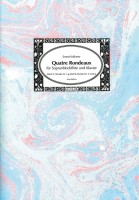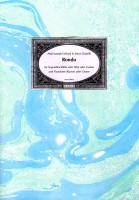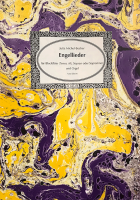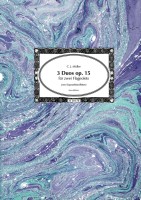The Csakan is an early romantic recorder that was developed in the Austro-Hungarian Empire shortly after 1800. It has the range of a mezzo-soprano with lowest note A-flat1 and was used as a solo instrument. It was a transposing instrument, with the music notated in C; like the recorder it had a thumbhole and seven finger holes. At first it only had one additional key but soon seven or more keys became standard. Several makers now offer copies of csakans in A-flat. This series has been dedicated therefore to the publication of original music and suitable arrangements in original keys. Some of these works are also available, in transposition, in the respective series for the traditional recorder.
The Csakan is an early romantic recorder that was developed in the Austro-Hungarian Empire shortly after 1800. It has the range of a mezzo-soprano with lowest note A-flat 1 and was used as a solo...
read more » Close window Csakan in A-flat
The Csakan is an early romantic recorder that was developed in the Austro-Hungarian Empire shortly after 1800. It has the range of a mezzo-soprano with lowest note A-flat1 and was used as a solo instrument. It was a transposing instrument, with the music notated in C; like the recorder it had a thumbhole and seven finger holes. At first it only had one additional key but soon seven or more keys became standard. Several makers now offer copies of csakans in A-flat. This series has been dedicated therefore to the publication of original music and suitable arrangements in original keys. Some of these works are also available, in transposition, in the respective series for the traditional recorder.
 Wilhelm Klingenbrunner, Duo op
Wilhelm Klingenbrunner, Duo op 


















